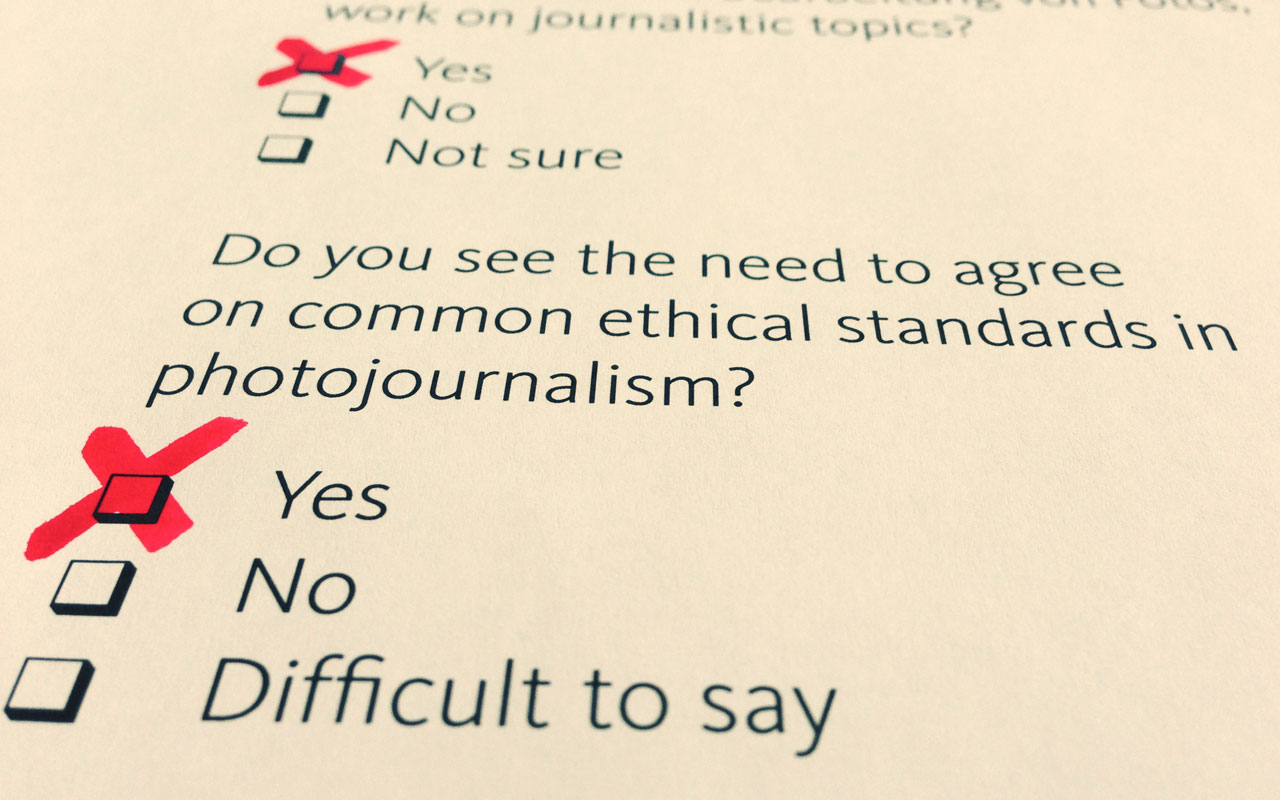FREELENS Position on Photojournalism
Photography is always a subjective snapshot in time of some event taken by the photographer, even though many observers think that what they are seeing in the photograph is “the truth”.
The following points establish guidelines for the practice of honest photojournalism.
1. Objectivity
The representation of events and circumstances should be factually accurate. Photographers should
report on events as objectively as possible, maintaining a proper professional distance and putting aside all personal prejudices. They should avoid representations that are clichéd or dictated by prejudice.
2. Independence, partiality, bias, tendentious reporting, bribery
Photographers should disclose any connections or involvement they have with persons, groups,
organizations or firms that are the subject of their reports.
3. Staging, re-enacting, influencing
The ideal of photojournalism is the “discovered moment”. Photojournalism depicts events that have occurred without the photographer’s intervention or influence. It is not acceptable to stage or manipulate events or to incite persons to undertake certain actions. Photojournalists need to be aware that their presence affects the way others behave and act. If persons shown in photographs perform particular actions “for the camera”, this should at least be indicated in the original caption written by the photographer.
One exception to this is portraits, where in many cases it is obvious to the observer that the person photographed has posed for the picture. In such instances it is advisable to indicate in the photographer’s caption that this is a posed portrait situation in order to distinguish it from an unposed portrait snapshot taken, for example, as part of a reportage.
4. Staging by third parties
Photojournalists need to be aware that they themselves might be the object of manipulation by third parties. This applies especially to events staged by third parties for the benefit of the press, or to photography undertaken in “controlled environments”, where the photographer is only allowed to work under supervision, or has access only to certain restricted areas. Here again clear reference to these circumstances must be made at least in the original caption written by the photographer.
5. Picture captions
Picture captions must in all respects be objective, complete, truthful and comprehensive. In particular, explicit reference must be made to any circumstances that might otherwise lead the observer to misinterpret the image. Picture captions must not seek to influence the perception of what is shown, attribute mere assertions to the image, interpret what is shown over and above straightforward description, or influence the perception of an image by imputing a particular meaning or message to it.
6. Image processing
There has never been photography without image processing. Digital photography in particular is absolutely dependent on processing of the image. The first priority of all image processing must be to retain or enhance the integrity of the image as a journalistic document. The aim and purpose of image processing must not be to deceive or mislead the observer or to represent events in a manipulative way. This applies both to the content of the image and the context.
It is therefore not possible to define the limits of what is permissible in terms of specific processing methods or degrees. Image processing has to be understood as a tool used by the photojournalist to approximate the finished image – the outcome of a technical process – more closely to his own impression of the actual situation. Therefore the following notes and comments do not and cannot constitute a definitive summary or statement of the position.
6.1. Composites, stamping, cloning, removing or adding image content
The removal or addition of pictorial content and/or elements, whether by cloning or by incorporating material from other images, and the rearrangement of the pictorial elements in a file, are not acceptable practice in photojournalism. Pixels must remain in their original position in the file. Permitted exceptions are the removal of spots caused by dust on the sensor of the digital camera and other technical failures of the sensor, as well as the removal of scratches and dust from images derived from analogue sources.
6.2. Cropping
Cropping the image counts as unacceptable manipulation only if it serves to deceive or mislead the observer.
6.3. White balance, exposure, adjustments to the raw data
A ruling on whether or not the exposure of an image may legitimately be adjusted after the event would make little sense, since it either assumes the existence of a “correct” exposure or disallows the reconstitution of this “correct” exposure in an image that has been incorrectly exposed. The same applies to adjustments of the white balance. Whether such interventions are permissible or not depends entirely on whether there is deliberate intent to deceive or mislead the observer.
6.4. Toning, black and white conversion, film simulations, photo apps
Similarly, whether or not the use of various film settings, smartphone apps, the processing of images through desaturation, the use of various film simulations or conversion of the image to a black and white version are permissible depends entirely on whether the photographer intends to deceive or mislead the observer or whether he is employing these technical aids for aesthetic or stylistic purposes in order to report on an event in his own personal visual idiom.
6.5. Image processing by a third party
Because the purpose of many image-processing operations is to make the image generated by the camera resemble more closely the visual perception of the photographer at the actual moment when the photograph was taken, the processing of the image by a third party should only be undertaken in consultation with the photographer.
7. Responsibility
Photographers are expected to treat all persons with dignity and respect. Vulnerable persons and victims of crimes or other tragedies deserve special consideration and sympathy. Photographers have a duty to decide whether or not the publication of sensitive images is genuinely in the public interest.
